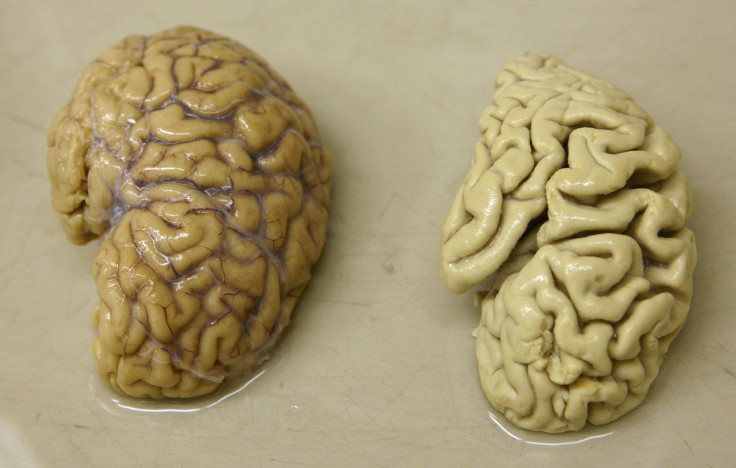Researchers Are Testing Two New Compounds That Appear To Reduce Aging, The Only Known Link To Alzheimer's

KEY POINTS
- Over 5.8 million Americans suffer from Alzheimer's
- The compounds are known as CMS 121 and J147
- Both compounds are plant-based
- Clinical trials in mice showed that the compounds appear to block damage done by aging
Alzheimer’s is a terrible disease that causes the victims' brain cells to degenerate and ultimately die. It has been linked to dementia, which causes a person to lose thinking, behavioral and social skills and dramatically disrupts the ability of the sufferer to function on their own. Over 5.8 million people in America alone suffer from the disease. Of those, 5.6 million people are over the age of 65 and 200,000 are considered younger-onset Alzheimer’s. There is no cure for the disease and no specific cause as of yet but there may be hope very soon.
A report in ScienceDaily shows that two experimental drug candidates known as CMS 121 and J147 have been shown to improve memory and slow but not stop the loss of brain cells when tested in mice. These new drugs have even been shown to block the damage done to brain cells that happens naturally during aging and restore more youthful brains on a molecular level.
The research conducted by scientists at The Salk Institute has also shown that the two experimental treatments have exhibited such promise which may even be more beneficial in a wider variety of uses, namely, in treating aging the primary risk factor of Alzheimer’s disease. While science has not been able to prove the link between old age and the condition, mathematically speaking, the risk starts typically at age 65 and statistically doubles every five years according to research.
There is not much information available to the public about the two compounds except that they are both plant-based. Before the celebration starts, it should be noted that while these initial indications are promising, there is much work to be done.
To test the drugs, scientists begin giving gray mice doses of the compounds. Based on their lifespan, nine months of age was equivalent to “middle age” in humans. The mice were then tested at a 4-month interval. The research teams tested memory, behavioral traits and genetic markers in their brains. The results were tremendous as when compared to other mice that had not been given the compound.
Moreover, the test subjects performed better and their brain cells appeared to have changed on a molecular level. The structure of the cell’s mitochondria seems to have been protected by the compounds, reducing the appearance and effects of aging.
© Copyright IBTimes 2024. All rights reserved.






















